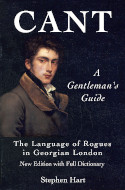The Royal Society in 1731
The following information is taken from London in 1731 by Don Manoel Gonzales. The complete text of this work is available at Project Gutenburg.
Don Manoel's Account
Among the public buildings of this ward [The Ward of Farringdon Without], that belonging to the Royal Society, situated at the north end of Two Crane Court, in Fleet Street, must not be omitted, though it be much more considerable on account of the learned members who assemble there, and the great advances that have been made by them of late years in natural philosophy, etc., than for the elegancy of the building.
During the grand rebellion, when the estates of the prime nobility and gentry were sequestered, and there was no court for them to resort to, the then powers encouraging only the maddest enthusiast, or the basest of the people, whom they looked upon as the fittest instruments to support their tyranny; some ingenious gentlemen, who had applied themselves chiefly to their studies, and abhorred the usurpation, proposed the erecting a society for the improvement of natural knowledge, which might be an innocent and inoffensive exercise to themselves in those troublesome times, and of lasting benefit to the nation.
Their first meeting, it is said, were at the chambers of Mr. Wilkins (afterwards Bishop of Chester) in Wadham College, in Oxford, about the year 1650, and the members consisted of the Honourable Robert Boyle, Esq., Dr. Ward (afterwards Bishop of Salisbury), Sir Christopher Wren, Sir William Petty, Dr. Wallis, Dr. Goddard, and Dr. Hook (late Professor of Geometry), the above-named Bishop Wilkins, and others.
In the year 1658 we find them assembling in Gresham College, in London, when were added to their number the Lord Brounker (their first president), Sir Robert Murray, John Evelyng, Esq., Sir George Ent, Dr. Croon, Henry Shingsby, Esq., and many others. And after the Restoration, his Majesty King Charles II. appeared so well pleased with the design, that he granted them a charter of incorporation, bearing date the 22nd of April, 15 Charles II., anno 1663, wherein he styled himself their founder, patron, and companion; and the society was from thenceforward to consist of a president, a council of twenty, and as many fellows as should be thought worthy of admission, with a treasurer, secretary, curators, and other officers.
When a gentleman desires to be admitted to the society, he procures one of the Corporation to recommend him as a person duly qualified, whereupon his name is entered in a book, and proper inquiries made concerning his merit and abilities; and if the gentleman is approved of, he appears in some following assembly, and subscribes a paper, wherein he promises that he will endeavour to promote the welfare of the society: and the president formally admits him by saying, I do, by the authority and in the name of the Royal Society of London for improving of natural knowledge, admit you a member thereof. Whereupon the new fellow pays forty shillings to the treasurer, and two-and-fifty shillings per annum afterwards by quarterly payments, towards the charges of the experiments, the salaries of the officers of the house, etc.
Behind the house they have a repository, containing a collection of the productions of nature and art. They have also a well-chosen library, consisting of many thousand volumes, most of them relating to natural philosophy; and they publish from time to time the experiments made by them, of which there are a great number of volumes, called Philosophical Transactions.

